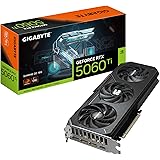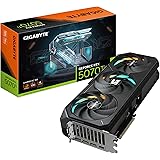The Nvidia GeForce RTX 3060 is one of the latest model of a new GPU series, released in January 2021. It was first to have its hash rate drop when mining Ethereum- which means it’s one step ahead of competitors like AMD and Intel who cannot do this yet! The card features 12GB GDDR6 memory with speeds reaching 1410 MHz or 1665 Mhz under Turbo Boost mode; making it perfect for any type of algorithm currently being mined by crypto collectors everywhere.

NVIDIA GeForce RTX 3060 Specifications:
• Giga Rays/s : 12
• Boost Clock: 1777 MHz
• Base Clock: 1320 MHz
• Memory Speed: 15 Gbps
• Standart Memory Config: 12 GB GDDR6
• Memory Interface Width: 192-bit
• Memory Bandwidth (GB/sec): 360GB/s
• Maximum GPU Temperature: 70C
• Graphics Card Power: 170 W
• Recommended System Power (W): 550W
• Supplementary Power Connectors: 1x PCIe 8-pin (adapter to 1x 12-pin included)
• Nividia Cuda Cores: 3584
Nvidia Gefoce RTX 3060 Mining Hashrates:

DaggerHashimoto, Octopus, and KAWPOW Algorithms
The Nvidia Geforce RTX 3060 graphics card has become a popular choice among cryptocurrency miners due to its impressive performance and relatively affordable price point. This essay will delve into the mining hashrates of the RTX 3060 across various algorithms, including DaggerHashimoto (Ethereum and Ethereum Classic), Octopus, and KAWPOW, and explore the impact of these algorithms on the card’s mining capabilities.
DaggerHashimoto (Ethereum and Ethereum Classic) Mining Hashrate
The DaggerHashimoto algorithm, also known as Ethash, is the primary mining algorithm used for Ethereum (ETH) and Ethereum Classic (ETC). The Nvidia Geforce RTX 3060 has demonstrated a mining hashrate of approximately 45 MH/s for Ethereum, which has since been reduced to around 23 MH/s due to Nvidia’s Lite Hash Rate (LHR) technology. For Ethereum Classic, the RTX 3060 can achieve a hashrate of 47 MH/s, which has been reduced to 25 MH/s with the implementation of the LHR feature.
The reduction in hashrate is a result of Nvidia’s efforts to make their graphics cards less attractive to cryptocurrency miners, as the high demand for GPUs from miners has led to a shortage of supply for gamers. The LHR technology is designed to limit the mining performance of Nvidia’s RTX 30-series cards, effectively making them less appealing for mining purposes while still maintaining their gaming capabilities.
Octopus Mining Hashrate
The Octopus algorithm is used by the Conflux network, and the Nvidia Geforce RTX 3060 has demonstrated a mining hashrate of around 44 MH/s for this algorithm. The Octopus algorithm is designed to be ASIC-resistant, meaning it is optimized for GPU mining rather than specialized mining hardware (ASICs). This makes the RTX 3060 a suitable choice for Octopus mining, as it can leverage its GPU-centric architecture to achieve a relatively high hashrate.
KAWPOW Mining Hashrate
The KAWPOW algorithm is used by the Ravencoin network, and the Nvidia Geforce RTX 3060 has shown a mining hashrate of approximately 22 MH/s for this algorithm. KAWPOW is a memory-hard algorithm that is designed to be ASIC-resistant, similar to the Octopus algorithm. The RTX 3060’s performance in KAWPOW mining demonstrates its versatility in handling a variety of mining algorithms beyond the traditional Ethash used for Ethereum and Ethereum Classic.
Affected Algorithms and Performance
In addition to the DaggerHashimoto, Octopus, and KAWPOW algorithms, the Nvidia Geforce RTX 3060 has also shown varying levels of performance across other mining algorithms, including:
The performance of the RTX 3060 across these algorithms highlights the card’s versatility in mining a wide range of cryptocurrencies, each with its own unique hashing requirements. However, the implementation of Nvidia’s LHR technology has significantly impacted the card’s mining capabilities, particularly for algorithms like Ethash and Etchash, where the hashrates have been reduced by almost 50%.
Implications and Future Developments
The Nvidia Geforce RTX 3060’s mining performance has significant implications for the cryptocurrency mining landscape. The card’s ability to achieve high hashrates across various algorithms makes it an attractive option for miners, particularly those who are looking to diversify their mining operations beyond just Ethereum. However, the implementation of Nvidia’s LHR technology has reduced the card’s appeal for dedicated cryptocurrency miners, as the reduced hashrates may not be as profitable as they once were.
Looking to the future, it is likely that Nvidia will continue to refine and improve its LHR technology, further limiting the mining capabilities of its graphics cards. This could lead to the development of alternative mining solutions, such as the use of ASIC miners or the exploration of other GPU architectures that are less susceptible to mining performance restrictions.
Additionally, the evolution of cryptocurrency mining algorithms may also play a role in the future of the Nvidia Geforce RTX 3060’s mining performance. As new algorithms are developed and existing ones are updated, the card’s capabilities may change, potentially opening up new opportunities or challenges for miners.
The Nvidia Geforce RTX 3060 has demonstrated impressive mining performance across a range of algorithms, including DaggerHashimoto, Octopus, and KAWPOW. However, the implementation of Nvidia’s LHR technology has significantly impacted the card’s mining capabilities, particularly for algorithms like Ethash and Etchash. As the cryptocurrency mining landscape continues to evolve, the RTX 3060’s role and performance in this space will likely continue to be a topic of interest and discussion among miners and industry observers.
Summary of Hashrates
• DaggerHashimoto [ EtHash : (ETH) & (ETC) ] Mining Hashrate : 26 MH/s 115 W
• Octopus Mining Hashrate : 44 MH/s
• KAWPOW Mining Hashrate : 22 MH/s
• The crypto currency Ergo is based on the Autolykos algorithm, which was updated in version 2 (Autolykos 2) in early 2021. The Autolykos 2 algorithm is based on the PoW concept and can be efficiently calculated by a graphics card.
• Autolykos2 Mining Hashrate: 115 MH/s 115 W
• BeamV3 Mining Hashrate: 23 Sol/s
• CuckooCycle Mining Hashrate : 6.5 G/s
• CuckooCortex : 2.8 Gps
• GrinCuckatoo31 Mining Hashrate : 1.15 G/s
• GrinCuckatoo32 Mining Hashrate : 0.4 G/s
• ZHash Mining Hashrate: 61 Sol/s
• Ethash: 48 Mh/s
• Equihash 144_5: 60 Sol/s
• Equihash 125_4 : 38.3 Sol/s
Summary of the Affected Algorithms Performance:
– Ethereum – Ethash algorithm – 45 -> 23 MH/s
– VertCoin – Verthash algorithm – 850 -> 370 KH/s
– Ethereum Classic – Etchash algorithm – 47 -> 25 MH/s
– Ravencoin – KAWPOW algorithm – 22 MH/s
– Veil – ProgPoW algorithm – 20.8 MH/s
– BitCash – X25X algorithm – 4.2 MH/s
– Conflux – Octopus algorithm – 42 MH/s
– Beam – BeamHashIII algorithm – 22.5 MH/s
– Aeternity – CuckooCycle algorithm – 6.6 G/s
– Grin – Cuckatoo32 algorithm – 0.39 G/s
– ZEL – Zelhash algorithm – 33.6 Sol/s
– Firo (XZC) – MTP algorithm – 2.4 MH/s




